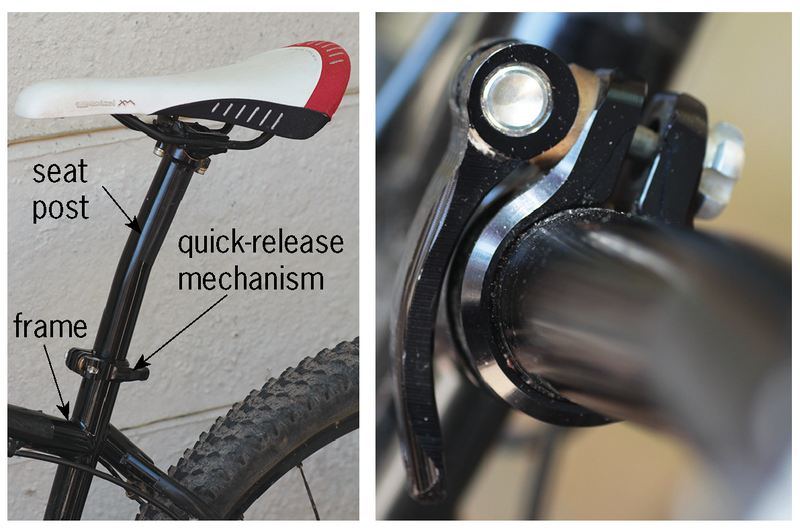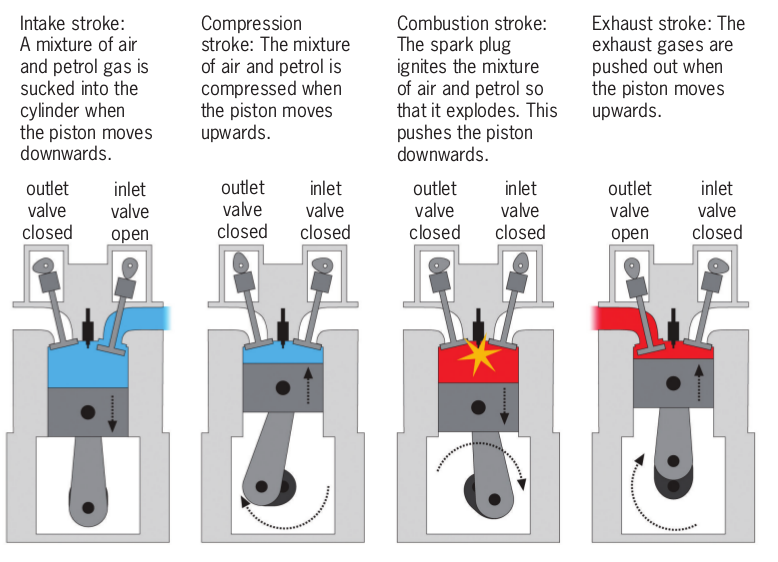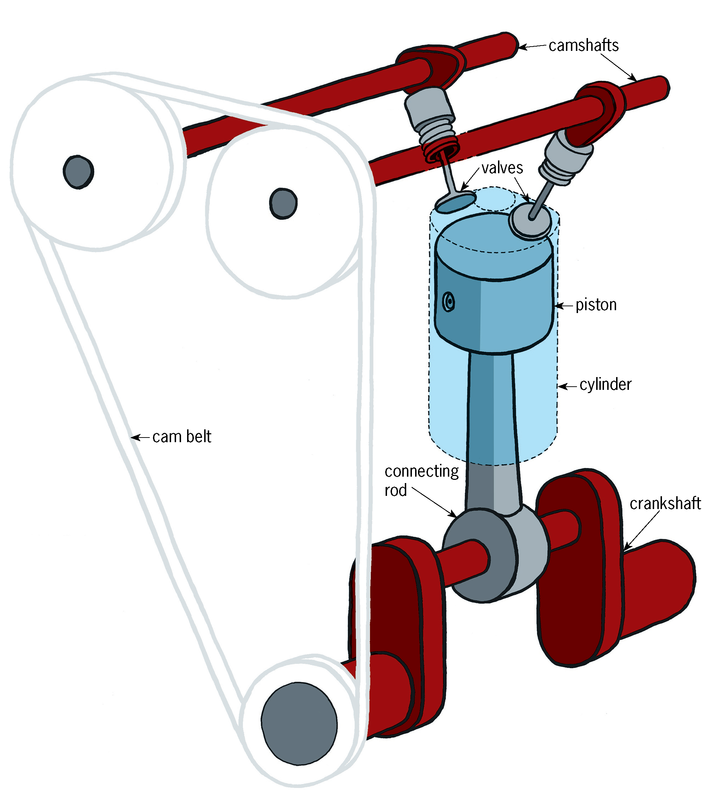Mechanisms that change the type of movement
rotational movement.reciprocating movement.The word "reciprocate" comes from the old Latin words "re" and "pro". "Re" means back and "pro" means forward.
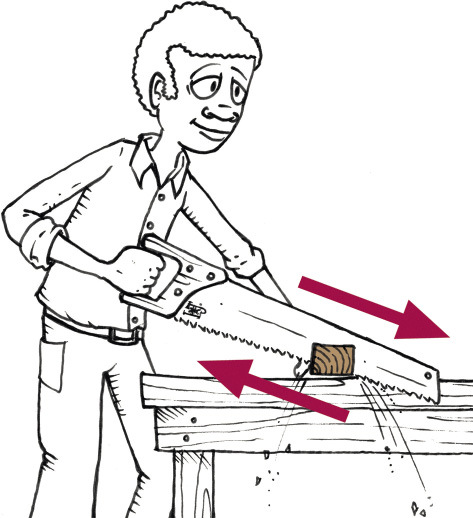
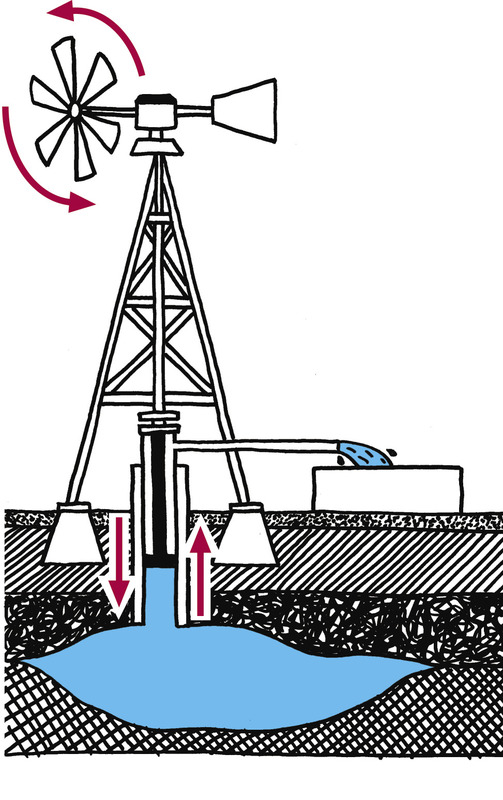
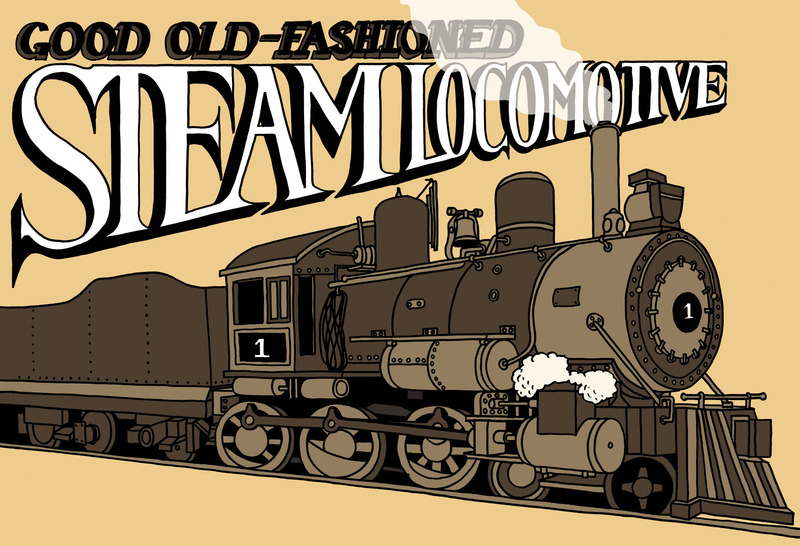
When a crank is part of a winch, it changes a big rotational movement with a small force into a small rotational movement with a big force. The longer the crank arm is, the more mechanical advantage it gives.
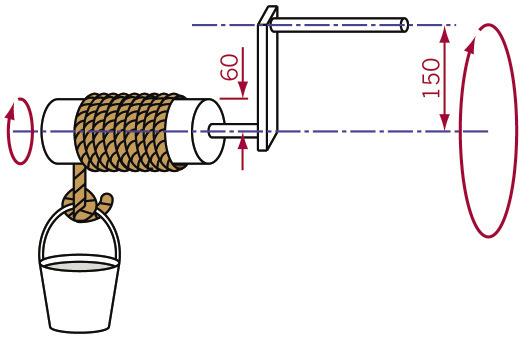
The way the crank works depends only on the distance between the centre of the axle and the centre of the pivot between the crank and the push rod. This distance is called the crank throw. This is shown on Figure 5.
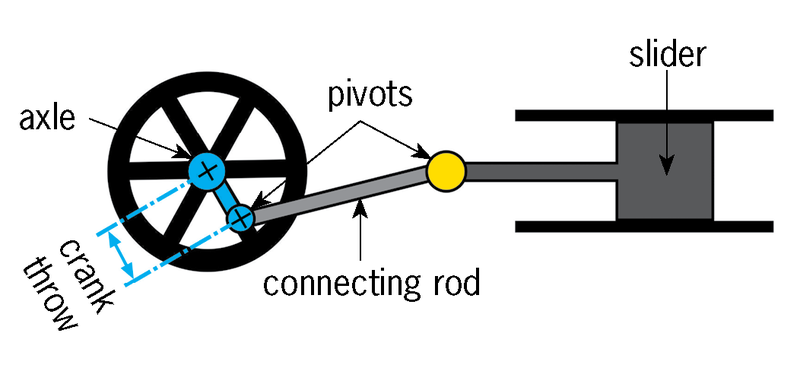
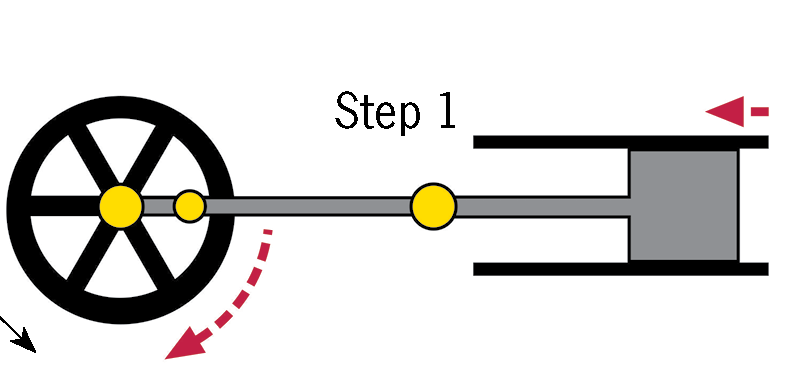
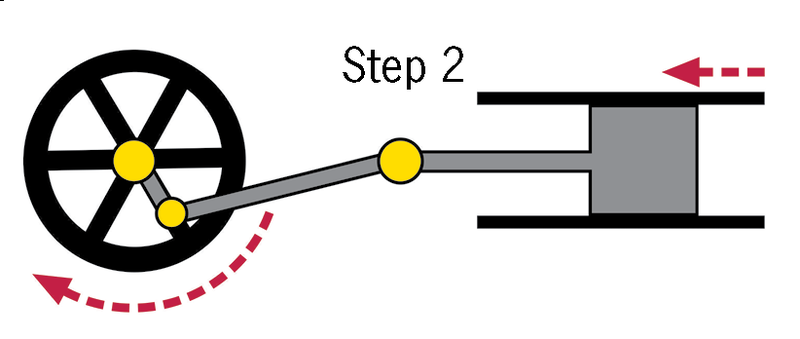
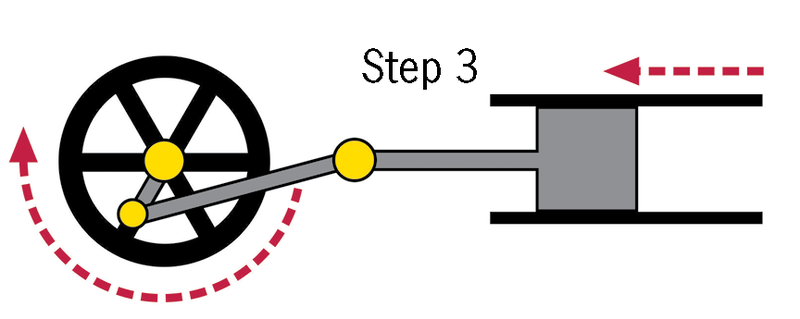
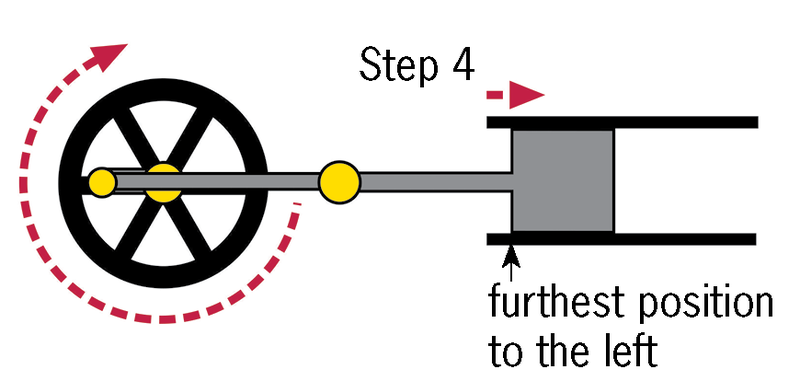
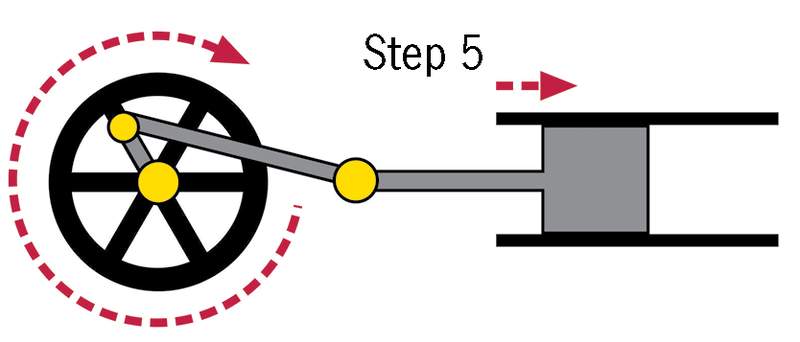
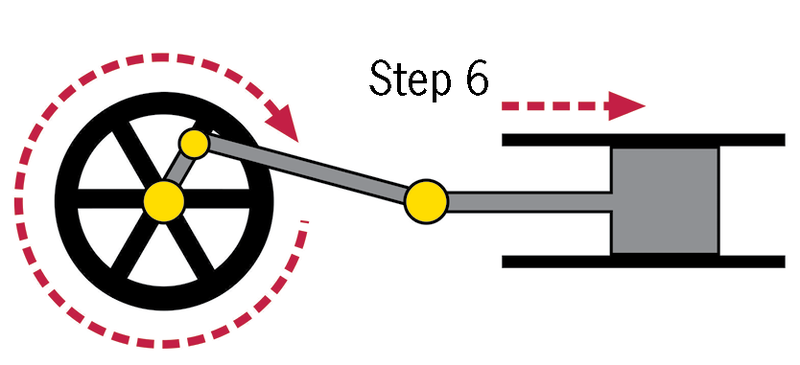
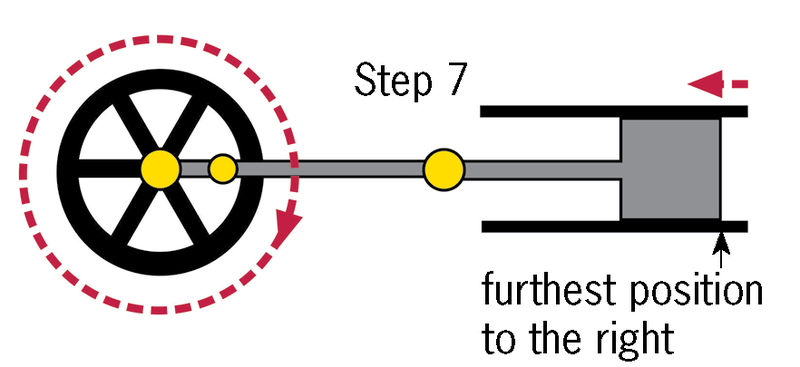
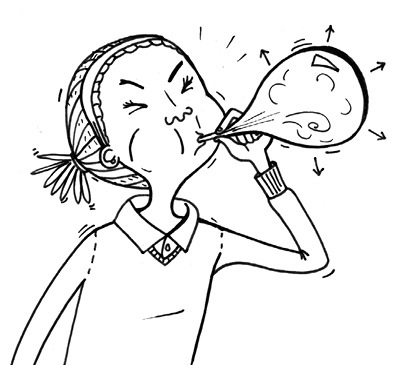

A crank-and-slider mechanism can be used to change rotational movement into reciprocal movement, or it can be used to change reciprocal movement into rotational movement. In other words, if you move the crank, then the slider will also move. And if you move the slider, the crank will also move.
cam is a wheel that is not round, or it is a round wheel that turns around an axle that is not at the centre of the wheel.follower. The rotational movement of the cam is changed into the reciprocating movement of the follower. The follower is in a sleeve, so that it can move in one direction only.driven by an axle, so that when the axle rotates, the cam rotates. When the cam rotates, the follower slides on the cam. The position of the follower depends on the angle at which the cam is rotated.Do you remember the difference between a driven wheel and a free-turning wheel about which you learnt in the previous chapter?
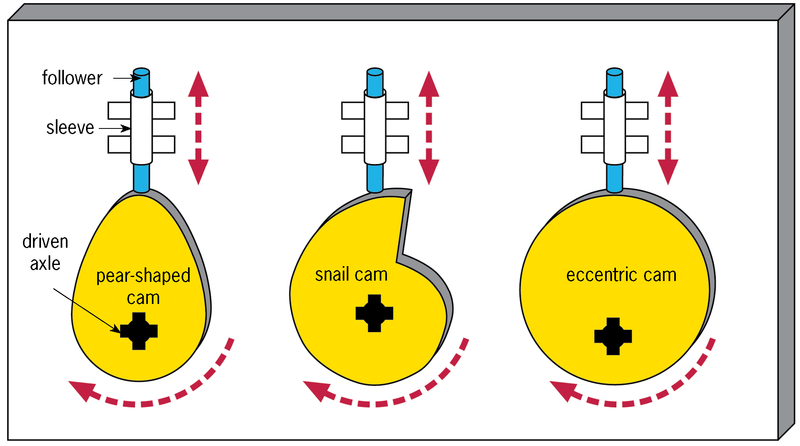
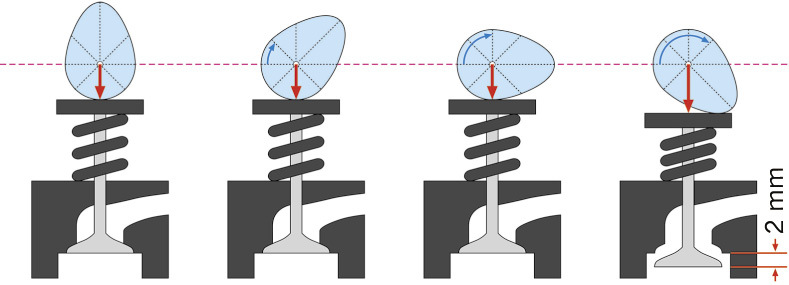
rotation of cam
starting position
1 eight of a cam rotation
2 eights of a cam rotation
3 eights of a cam rotation
rotation of cam in degrees
0°
45°
90°
135°
distance that valve is open
0
2 mm

A cam can convert rotational to reciprocal movement, but not the other way round

4 eights of a cam rotation
5 eights of a cam rotation
6 eights of a cam rotation
7 eights of a cam rotation
one full cam rotation
180°
225°
270°
315°
360°
Measure the different arrows, from the shortest to the longest and fill in your measurements in the table below.
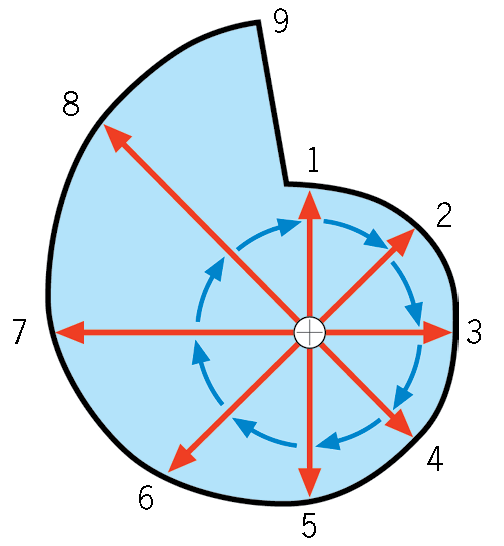
|
position |
1 |
2 |
3 |
4 |
5 |
6 |
7 |
8 |
9 |
|
length |

Some cams are a round wheel, but they do not rotate around the centre of the wheel. These cams are called eccentric cams. They are used on many modern bicycles.
During a bicycle race, the cyclists sometimes get flat or punctured tyres. They then have to take the wheel off to remove the tyre before they can fix the tyre. This takes a lot of time, and they'll struggle to catch up with the other cyclists again.
Many years ago, engineers designed a mechanism with which you can quickly take a wheel off a bicycle, without using any tools. This is called a "quick release" mechanism.
Today, more expensive bicycles use quick release mechanisms on their wheels. They also use a quick release mechanism to make it quick and easy to change the height of the saddle. The photos below and on the right show how a quick release mechanism uses an eccentric cam to lock the saddle at the correct height.
